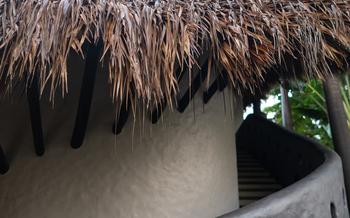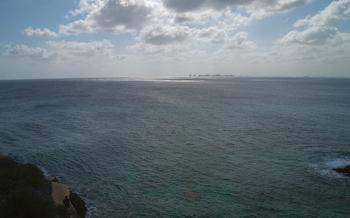
Tulum Sea Turtle Nesting Beaches
- Tulum's Sea Turtle Nesting Beaches: A Haven for Marine Conservation
- The Nesting Season: Witnessing the Miracle of New Life
- Choosing the Right Tour Operator: Ensuring a Responsible Experience
- The Different Nesting Species: Understanding Their Unique Characteristics
- The Role of Sea Turtles in the Marine Ecosystem: Guardians of the Ocean
- The Challenges Facing Sea Turtles: Threats to Their Survival
- The Importance of Education: Raising Awareness for Sea Turtle Conservation
- The Future of Sea Turtle Conservation in Tulum: Ensuring Their Legacy
- The Economic Importance of Sea Turtles: A Catalyst for Conservation
- The Emotional Connection: Why We Care About Sea Turtles
- The Role of Research: Unlocking the Secrets of Sea Turtle Biology
- The Power of Advocacy: Shaping Policies for Sea Turtle Protection
- Insider Tip: Experiencing the Nesting Beaches Beyond the Crowds
Tulum's Sea Turtle Nesting Beaches: A Haven for Marine Conservation
Tulum's sea turtle nesting beaches are a sanctuary for these majestic creatures, providing a safe haven for them to lay their eggs and perpetuate their species. Sea turtles play a crucial role in maintaining the health of our oceans, acting as predators, prey, and indicators of ecosystem well-being. Sadly, these gentle giants face numerous threats, including habitat loss, pollution, and climate change, which have led to a significant decline in their populations.
Witnessing sea turtles nesting is an awe-inspiring experience that connects us with the natural world and highlights the importance of conservation. By visiting these nesting beaches and following responsible turtle-watching practices, we can minimize disturbance and contribute to the protection of these remarkable creatures.
In the early 1990s, Tulum became a pioneer in sea turtle conservation, establishing the first sea turtle protection program in the region. Since then, dedicated conservationists have worked tirelessly to safeguard these nesting beaches, implementing measures such as beach patrols, nest relocation, and public education programs. Their efforts have resulted in a significant increase in the number of sea turtles nesting in Tulum, offering hope for the future of these endangered species.
The Nesting Season: Witnessing the Miracle of New Life
Theoretical notions:
Sea turtles have a remarkable nesting cycle that captivates the hearts of nature enthusiasts worldwide. The nesting season typically spans from May to October, with different species nesting at various times throughout this period. During this time, female turtles emerge from the ocean and laboriously crawl ashore, driven by an ancient instinct to lay their eggs in the sand.
Practical suggestions:
To witness the awe-inspiring spectacle of sea turtles nesting, plan your visit to Tulum's beaches during the nesting season. The optimal time to observe nesting activity is typically between 9 pm and midnight, when the turtles are most active. Remember to be patient and respectful, as the turtles may take several hours to complete their nesting process.
Anecdotes:
I vividly recall my first encounter with a nesting sea turtle. As I quietly observed from a distance, I was mesmerized by the sheer size and grace of this magnificent creature. The rhythmic movements of her flippers as she dug her nest were both powerful and delicate, and the anticipation of witnessing her lay her eggs was palpable.
Historical background:
Sea turtle nesting patterns in Tulum have undergone significant changes over time due to conservation efforts. In the past, egg harvesting and habitat destruction posed severe threats to turtle populations. However, thanks to dedicated conservation initiatives, nesting success rates have improved, and the number of turtles returning to Tulum's beaches has steadily increased.
Choosing the Right Tour Operator: Ensuring a Responsible Experience
When selecting a tour operator for your sea turtle nesting beach experience, it is crucial to choose one that prioritizes responsible practices and sustainability. Look for operators that are certified by reputable organizations such as the Sea Turtle Conservancy or the World Wildlife Fund. These certifications indicate that the operator adheres to strict guidelines for minimizing disturbance to the turtles and their nesting environment.
Consider the group size offered by the tour operator. Smaller groups generally have less impact on the turtles and allow for a more intimate experience. Inquire about the operator's training and experience in leading sea turtle tours. A knowledgeable guide can provide valuable insights into the turtles' behavior and nesting habits, enhancing your overall experience.
Be wary of operators that offer activities that may disturb the turtles, such as touching or riding on them. These practices can cause stress and harm to the turtles. Instead, opt for operators that focus on observation and education, allowing you to witness the nesting process without interfering with it.
By choosing a responsible tour operator, you not only ensure a meaningful and educational experience but also contribute to the long-term conservation of these magnificent creatures.
The Different Nesting Species: Understanding Their Unique Characteristics
Tulum's sea turtle nesting beaches are home to a diverse array of sea turtle species, each with its own unique physical features and behaviors.
The green sea turtle, the most common species found in Tulum, is known for its large size and striking green coloration. It is a herbivore, primarily feeding on seagrass and algae.
The loggerhead sea turtle is another common species, recognizable by its reddish-brown shell and large head. It has a more varied diet, including fish, jellyfish, and mollusks.
The hawksbill sea turtle is smaller in size and has a distinctive beak-like mouth. It is a specialist feeder, primarily eating sponges.
The leatherback sea turtle is the largest of all sea turtles and has a unique leathery shell. It is a long-distance migrant and can travel vast distances across the ocean.
The kemps ridley sea turtle is the smallest of all sea turtles and is critically endangered. It is known for its olive-colored shell and distinctive triangular head.
To identify the different species, look for their unique physical characteristics and observe their behavior. For example, green sea turtles are often found grazing on seagrass beds, while loggerheads are more likely to be found hunting for fish and invertebrates. Hawksbill sea turtles can be spotted using their beaks to pry sponges from the reef, and leatherbacks are often seen swimming long distances in search of food.
By understanding the different nesting species and their unique characteristics, you can enhance your experience on the nesting beaches and contribute to the conservation of these magnificent creatures.
The Role of Sea Turtles in the Marine Ecosystem: Guardians of the Ocean
Sea turtles play a pivotal role in maintaining the health and balance of marine ecosystems. As apex predators, they regulate populations of jellyfish, sponges, and other invertebrates, preventing outbreaks that can disrupt the food chain. Their grazing habits also help control algal growth, ensuring the health of coral reefs and seagrass beds.
Beyond their direct ecological impact, sea turtles serve as indicators of ocean health. Their presence and abundance reflect the overall condition of marine ecosystems. By monitoring sea turtle populations, scientists can identify areas of concern and take action to address threats such as pollution, habitat loss, and climate change.
The conservation of sea turtles is therefore essential for the well-being of the entire marine environment. By protecting these magnificent creatures, we safeguard the intricate web of life that sustains our oceans and ultimately, our own survival.
The Challenges Facing Sea Turtles: Threats to Their Survival
Sea turtles face a multitude of threats to their survival, jeopardizing their existence and the delicate balance of marine ecosystems. Habitat loss, pollution, and climate change stand as the most pressing challenges, each posing unique risks to these ancient creatures.
Habitat Loss:
Coastal development, dredging, and the destruction of nesting sites due to human activities have resulted in a significant loss of suitable nesting and feeding grounds for sea turtles. As a result, turtles are forced to travel farther in search of suitable nesting sites, increasing their exposure to predators and other hazards.
Pollution:
Marine pollution, including plastic debris, oil spills, and chemical contaminants, poses a severe threat to sea turtles. Plastic ingestion can cause intestinal blockages and malnutrition, while oil spills can coat their shells, affecting their buoyancy and ability to regulate their body temperature. Chemical pollutants, such as pesticides and heavy metals, can accumulate in their tissues, leading to health problems and reproductive issues.
Climate Change:
Climate change is having a profound impact on sea turtles, primarily through rising sea levels and changes in ocean temperatures. Rising sea levels inundate nesting beaches, destroying eggs and hatchlings, while warmer temperatures can disrupt their nesting cycles and increase the incidence of deformities in hatchlings. Additionally, changes in ocean currents and food availability due to climate change can affect their migration patterns and survival rates.
These threats have led to a significant decline in sea turtle populations worldwide, emphasizing the urgent need for conservation efforts to protect these remarkable creatures and ensure their survival for future generations.
The Importance of Education: Raising Awareness for Sea Turtle Conservation
Theoretical Notions:
Education plays a crucial role in promoting sea turtle conservation by fostering understanding, empathy, and a sense of responsibility towards these magnificent creatures. By educating ourselves and others about sea turtles, their biology, threats they face, and the importance of their conservation, we can create a groundswell of support for their protection.
Practical Suggestions:
- Learn About Sea Turtles: Familiarize yourself with sea turtle biology, nesting behaviors, and the threats they face. Share this knowledge with friends, family, and on social media.
- Support Sea Turtle Education Programs: Look for organizations that offer educational programs and workshops about sea turtles. Encourage schools and communities to incorporate sea turtle conservation into their curricula.
- Engage in Citizen Science: Participate in citizen science projects that collect valuable data on sea turtle populations and their habitats. This data contributes to scientific research and helps inform conservation efforts.
Anecdotes:
- A volunteer at a sea turtle conservation organization shared how educating tourists about the importance of reducing plastic pollution led to a significant decrease in plastic waste on the nesting beaches.
- A local school teacher integrated sea turtle conservation into her science curriculum, inspiring her students to become passionate advocates for sea turtle protection.
- A social media campaign highlighting the beauty and vulnerability of sea turtles went viral, reaching millions of people and raising awareness about the need for conservation.
Historical Background:
The history of sea turtle education dates back to the early conservation efforts of the 20th century. In the 1950s, pioneering conservationists began to educate the public about the plight of sea turtles, leading to the establishment of the first sea turtle sanctuaries. Over the years, education programs have evolved to include interactive exhibits, school curricula, citizen science initiatives, and social media campaigns, reaching a broader audience and fostering a deeper understanding of sea turtle conservation.
The Future of Sea Turtle Conservation in Tulum: Ensuring Their Legacy
Long-term conservation efforts are crucial for the survival of sea turtles in Tulum. The success of these efforts relies heavily on the involvement and support of local communities. By working together, conservationists, researchers, and local residents can create a sustainable future for sea turtles and their nesting beaches.
Theoretical Notions Sea turtle conservation is a complex and multifaceted endeavor that requires a long-term commitment. It involves addressing threats such as habitat loss, pollution, and climate change, as well as promoting education and raising awareness. Local communities play a vital role in conservation efforts, as they have a vested interest in protecting the natural resources that sustain their livelihoods.
Practical Suggestions There are several ways to support sea turtle conservation in Tulum. Visitors can choose to stay in accommodations that are committed to sustainable practices and support local businesses that prioritize sea turtle conservation. They can also participate in volunteer programs or donate to organizations that are working to protect sea turtles and their nesting beaches.
Anecdotes One inspiring example of successful sea turtle conservation in Tulum is the work of the Akumal Sea Turtle Sanctuary. This community-based organization has been working for over 30 years to protect sea turtles and their nesting beaches. Through education, research, and community engagement, the sanctuary has played a crucial role in raising awareness and promoting conservation efforts in the region.
Historical Background Sea turtle conservation in Tulum has a long and rich history. The first sea turtle protection laws were enacted in the 1970s, and since then, significant progress has been made in protecting nesting beaches and reducing threats to sea turtles. However, there is still much work to be done, and the future of sea turtle conservation in Tulum depends on the continued commitment of local communities, conservationists, and visitors alike.
The Economic Importance of Sea Turtles: A Catalyst for Conservation
Theoretical notions:
Sea turtles play a crucial role in the local economy of Tulum, contributing to the livelihoods of many people. They attract a significant number of tourists who come to witness the incredible spectacle of the nesting beaches, generating revenue for the tourism industry. Additionally, sea turtles support the fishing industry by preying on jellyfish and other species that compete with fish for food, leading to increased fish populations and benefiting local fishermen.
Practical suggestions:
Support local businesses that prioritize sea turtle conservation: Choose hotels, restaurants, and tour operators that are committed to protecting sea turtles and their habitat. These businesses often have sustainable practices in place and contribute a portion of their profits to conservation efforts.
Purchase sea turtle-friendly products: Look for products made from sustainable materials or that support sea turtle conservation organizations. Many local artisans create beautiful crafts and souvenirs using recycled materials or incorporating sea turtle motifs, allowing you to take home a unique piece while supporting conservation.
Anecdotes:
A local tour operator, "Sea Turtle Adventures," has implemented a successful program that involves the local community in sea turtle conservation. By employing local fishermen as guides and educating them about the importance of sea turtles, the program has not only created jobs but also fostered a sense of ownership and responsibility for the turtles among the community.
A local restaurant, "The Turtle Nest," has partnered with a sea turtle conservation organization to donate a portion of its profits to support their research and conservation efforts. The restaurant also features a menu that highlights dishes made with sustainable seafood, further promoting the conservation message to its customers.
Historical background:
Historically, sea turtles were hunted for their meat, eggs, and shells, leading to a significant decline in their populations. However, the recognition of their economic importance has played a crucial role in shifting attitudes towards sea turtle conservation. The tourism industry, in particular, has been a driving force behind conservation efforts, as it relies on healthy sea turtle populations to attract visitors.
The Emotional Connection: Why We Care About Sea Turtles
Sea turtles have captured the hearts of people worldwide, transcending cultural and geographical boundaries. Their unique characteristics, gentle nature, and resilience in the face of adversity evoke a deep emotional connection that fuels our desire to protect and conserve them.
On a personal level, encounters with sea turtles can be transformative experiences. Whether it's witnessing a mother turtle laying her eggs in the sand, watching hatchlings scurry towards the ocean, or simply observing their graceful movements underwater, these interactions can leave a lasting impression. The sheer size and ancient lineage of sea turtles instill a sense of awe and wonder, reminding us of our connection to the natural world.
Beyond their physical attributes, sea turtles represent important cultural and symbolic values. In many indigenous cultures, they are revered as sacred creatures, embodying wisdom, longevity, and fertility. Their ability to navigate vast oceans and return to the same nesting sites year after year symbolizes resilience, determination, and the enduring bonds of family.
In modern society, sea turtles have become powerful symbols of conservation and environmental awareness. Their plight has helped raise awareness about the threats facing our oceans and the importance of protecting marine ecosystems. The global movement to save sea turtles has brought together diverse groups of people, from scientists and conservationists to policymakers and everyday citizens, united by a shared passion for these magnificent creatures.
Our emotional connection to sea turtles is a powerful force for conservation. It drives us to learn more about their biology and behavior, support conservation efforts, and advocate for policies that protect their habitats and ensure their survival. By fostering empathy and understanding, we can create a world where sea turtles and future generations can thrive.
The Role of Research: Unlocking the Secrets of Sea Turtle Biology
Sea turtle research plays a crucial role in understanding their behavior, ecology, and the threats they face. Scientists conduct various studies to gather data on sea turtle populations, their nesting patterns, migration routes, and feeding habits. This information is essential for developing effective conservation strategies and ensuring the survival of these ancient mariners.
Theoretical Notions:
- Research helps us understand the complex life cycle of sea turtles, including their nesting behavior, migration patterns, and feeding habits.
- By studying sea turtle biology, we can identify the factors that affect their survival and reproduction, such as habitat degradation, climate change, and pollution.
- Research also helps us understand the role of sea turtles in the marine ecosystem, including their interactions with other species and their impact on the food chain.
Practical Suggestions:
- Support sea turtle research organizations and initiatives by donating or volunteering your time.
- Participate in citizen science projects that collect data on sea turtles, such as beach surveys or photo identification projects.
- Share your observations of sea turtles with researchers and conservation organizations to contribute to their understanding of these amazing creatures.
Anecdotes:
- A team of researchers in Tulum used satellite tracking devices to study the migration patterns of green sea turtles. Their findings revealed that these turtles traveled thousands of miles across the ocean, returning to the same nesting beach year after year.
- A long-term study conducted by the National Marine Fisheries Service in the United States showed that loggerhead sea turtles have a high rate of nest success when they nest in undisturbed areas with healthy coral reefs.
- A group of citizen scientists in Costa Rica helped to identify a new nesting site for leatherback sea turtles, which led to the establishment of a new marine protected area to protect these critically endangered turtles.
Historical Background:
- Sea turtle research has a long history, dating back to the early 1900s when scientists began to study their nesting behavior and migration patterns.
- In the 1960s and 1970s, sea turtle research intensified due to concerns about the decline in sea turtle populations.
- Today, sea turtle research is a global effort involving scientists, conservation organizations, and citizen scientists from around the world.
The Power of Advocacy: Shaping Policies for Sea Turtle Protection
Theoretical Notions:
Sea turtles face numerous threats, including habitat loss, pollution, and climate change. Laws and regulations play a critical role in protecting sea turtles and their habitats. Advocacy is essential for influencing policies that impact sea turtles and ensuring their long-term survival.
Practical Suggestions:
Educate Yourself: Understand the issues facing sea turtles and the existing policies that impact them. Support Conservation Organizations: Join and support organizations working to protect sea turtles and their habitats. Get Involved Locally: Attend local government meetings, express your support for sea turtle conservation measures, and advocate for stronger regulations. Contact Elected Officials: Write letters, make phone calls, and meet with your elected representatives to discuss sea turtle conservation issues. Participate in Public Hearings: Attend public hearings on proposed policies that may impact sea turtles and voice your concerns.
Anecdotes:
- A local community in Mexico successfully advocated for the creation of a marine sanctuary to protect sea turtles from fishing and other human activities.
- A group of concerned citizens organized a petition to ban the sale of sea turtle products, leading to a change in local laws.
- An international coalition of conservation organizations successfully lobbied for the inclusion of sea turtles in an international treaty, providing them with legal protection.
Historical Background:
The history of sea turtle advocacy is marked by passionate individuals and organizations working to protect these magnificent creatures. In the past, advocacy efforts have focused on banning sea turtle hunting, establishing marine protected areas, and regulating fishing practices. Today, advocates continue to work tirelessly to address emerging threats such as climate change and plastic pollution.
Insider Tip: Experiencing the Nesting Beaches Beyond the Crowds
While visiting the Tulum sea turtle nesting beaches during peak season can be an unforgettable experience, it's worth considering venturing beyond the crowded areas to discover the tranquility of lesser-known nesting sites. These hidden gems offer a more intimate and immersive encounter with the turtles, allowing you to witness their nesting rituals in a serene environment.
Theoretical Notions:
- Avoiding Peak Tourist Seasons:
-
Peak tourist seasons, especially during the summer months, can lead to overcrowding on the nesting beaches, potentially disturbing the turtles and their nesting process.
-
Choosing Alternative Nesting Sites:
- Tulum is home to several nesting beaches, each with its unique charm and fewer visitors. Exploring these alternative sites provides a more secluded and authentic experience.
Practical Suggestions:
- Research and Plan Ahead:
-
Conduct thorough research to identify less crowded nesting beaches. Plan your visit during the shoulder seasons (May-June and September-October) to avoid the peak crowds.
-
Seek Local Guidance:
-
Consult with local experts, such as conservation organizations or experienced tour operators, to get recommendations for quieter nesting beaches.
-
Embrace Flexibility:
- Be prepared to adjust your plans based on the nesting activity and weather conditions. Flexibility will increase your chances of finding a peaceful nesting beach.
Anecdotes:
- A Serene Encounter:
-
"I stumbled upon a secluded nesting beach during the shoulder season. The tranquility of the surroundings allowed me to observe a sea turtle nesting up close without any distractions."
-
An Unforgettable Memory:
- "By choosing a less crowded beach, I had the privilege of witnessing a mother turtle returning to the ocean after successfully laying her eggs. It was a magical moment that I will cherish forever."
Historical Background:
- Changing Patterns of Tourism:
-
Over the years, Tulum's nesting beaches have experienced a surge in tourism, leading to increased foot traffic and disturbances during the nesting season.
-
Impact on Turtles:
- Crowds and noise can deter turtles from nesting, reduce their success rates, and potentially harm their hatchlings. Choosing quieter nesting beaches helps minimize these disturbances.









